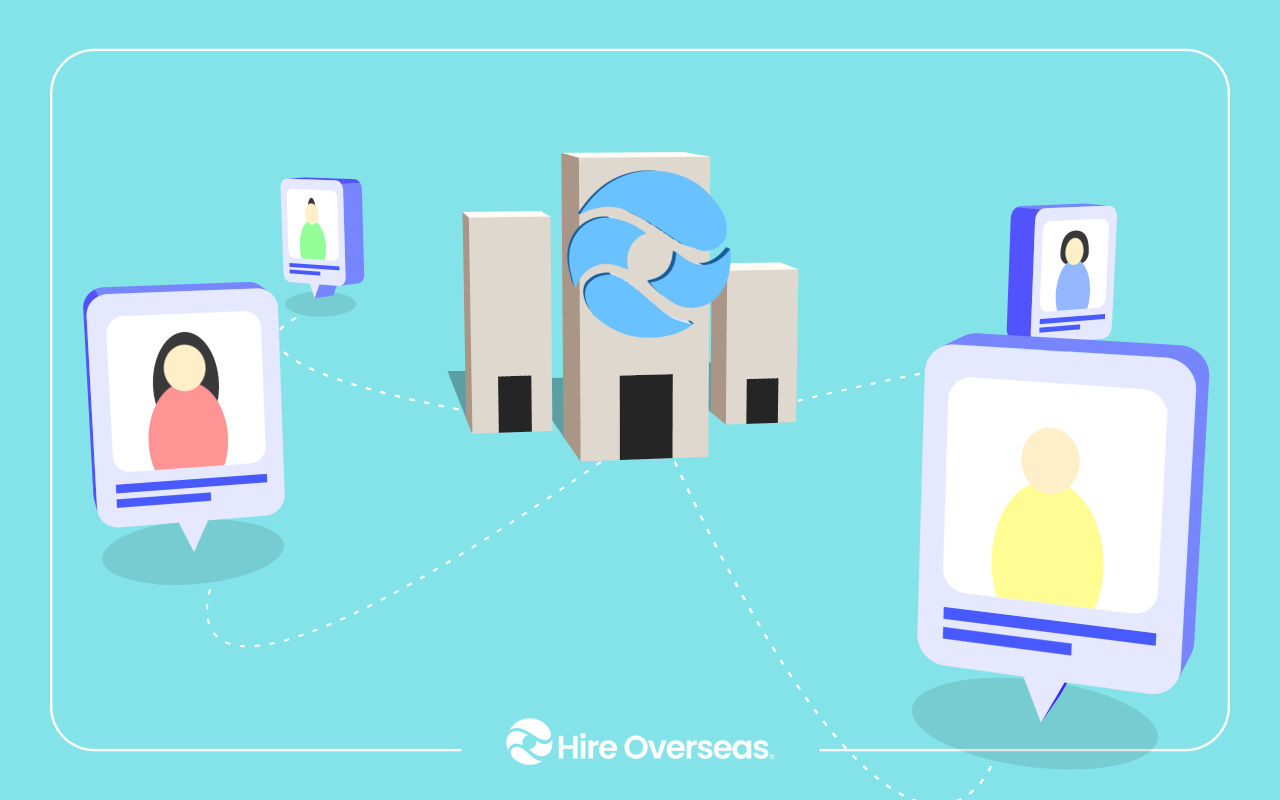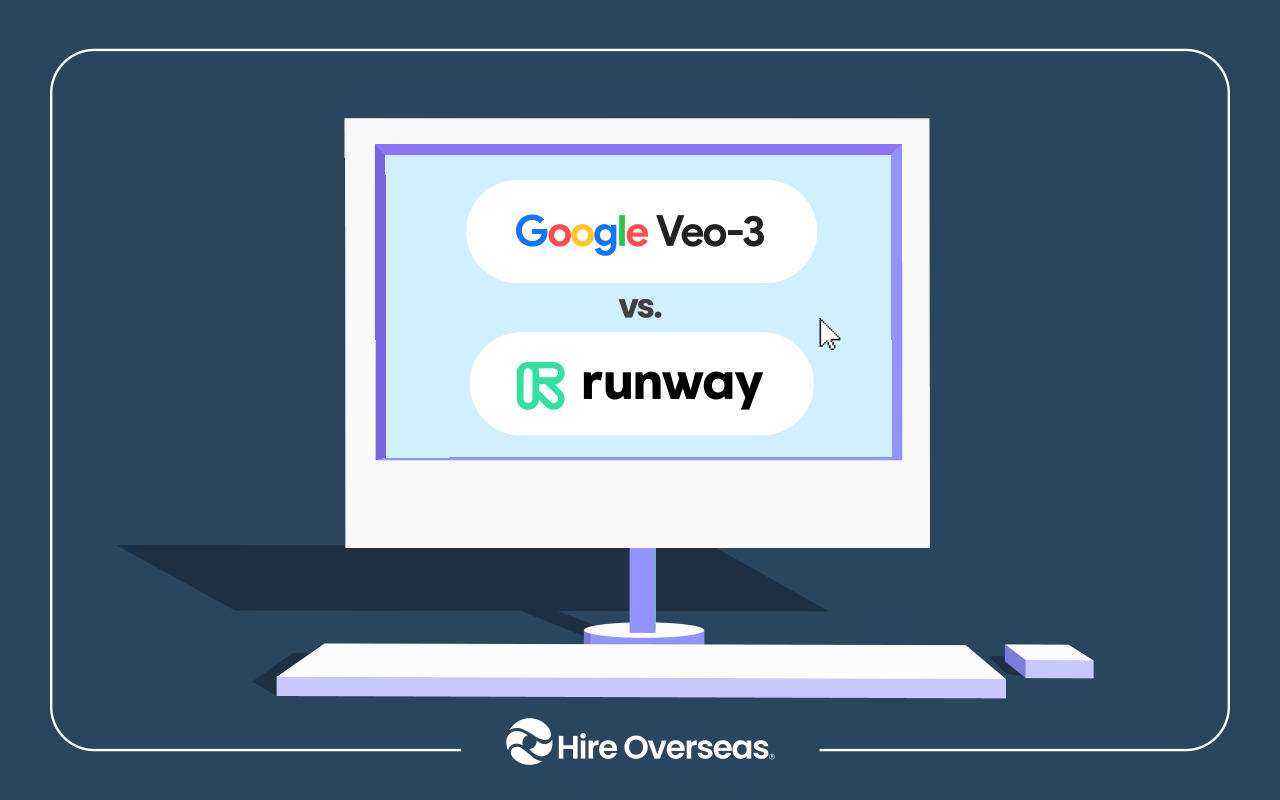Upwork vs Fiverr: Which Platform Is Best for Hiring Overseas Freelancers in 2025?
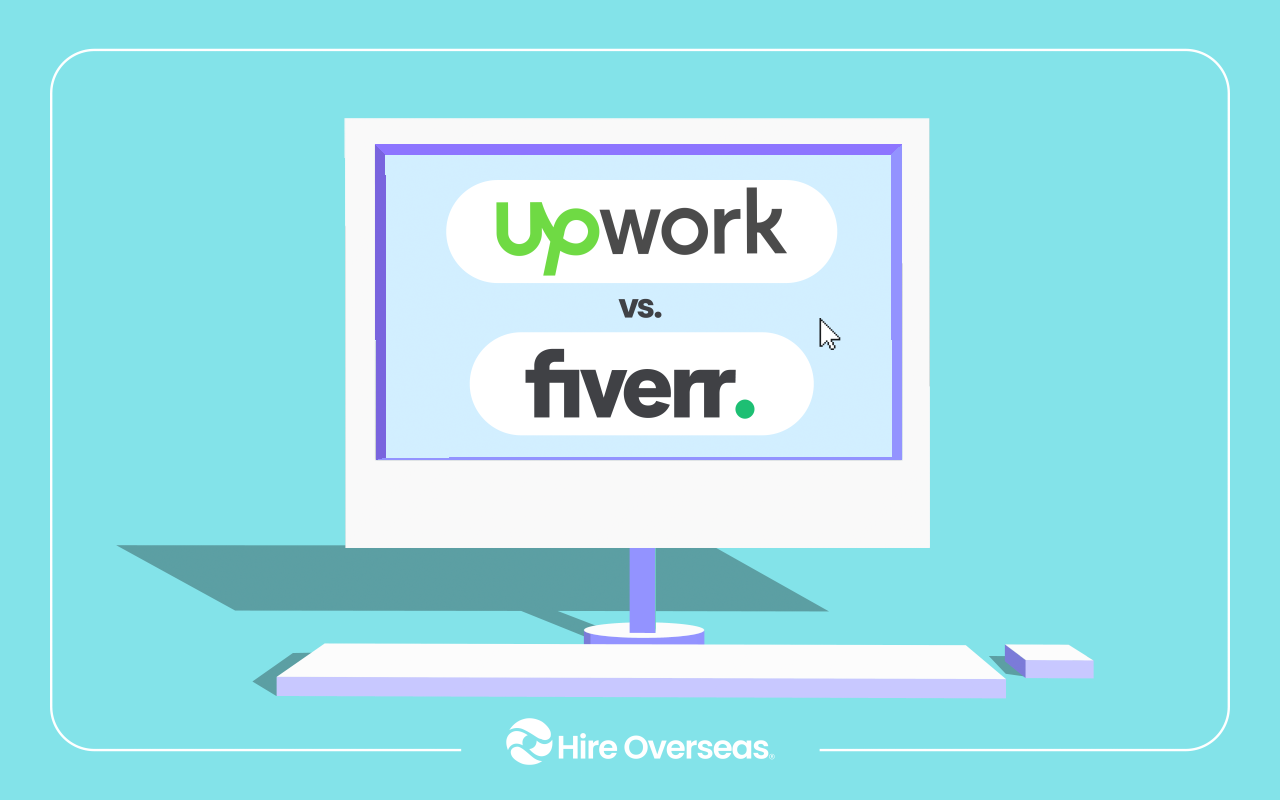
Freelancers already make up 46.6% of the global workforce—about 1.57 billion people worldwide (Exploding Topics, 2024). With remote hiring now the norm, two names dominate the conversation: Upwork and Fiverr. If you’re a business owner scouting overseas talent, which platform truly delivers?
This article provides a clear, comparative analysis of fees, talent quality, workflows, and risk, enabling you to select the most suitable marketplace and prevent costly mistakes.
Quick-Glance Comparison
The most significant difference between Upwork and Fiverr lies in how work is structured. Fiverr is built around pre-defined, project-based “gigs” which are great for quick, repeatable tasks. Upwork supports hourly or long-term contracts, making it better for ongoing roles or complex projects.
Fiverr at a Glance
Fiverr is a task-oriented freelance platform where services are sold as predefined packages called “gigs.” Freelancers (Sellers) create listings with clear deliverables and prices, often starting at $5. It’s built for quick-turnaround, project-based work such as logo design, voiceovers, video editing, writing, and basic coding.
Fiverr organizes freelancers into Seller Levels (New, Level 1, Level 2, and Pro), which reflect experience, reviews, and delivery history—making it easy to filter top talent. The buying process is streamlined: no job posts, just browse, click, and pay. Fiverr now has over 4.5 million active buyers and handles millions of gigs monthly, making it ideal for fast, transactional outsourcing.
Upwork at a Glance
Upwork is a global freelance marketplace designed for businesses looking to hire independent professionals across a wide range of industries. Unlike gig-based platforms, Upwork lets clients post custom job listings and receive proposals from freelancers, making it a useful comparison point when considering Upwork vs hire overseas options.
Businesses hire on Upwork for long-term, complex work such as software development, customer support, design, marketing, and data analytics. The platform supports both hourly and fixed-price contracts, backed by features like Escrow payment protection and the Upwork Time Tracker, which logs activity for hourly work. With over 18 million registered freelancers and 5 million clients, it’s a go-to for companies building remote teams or scaling flexible operations with vetted talent.
Pricing & Fee Structures: What a $500 Project Really Costs
Upwork and Fiverr use very different fee models—something that significantly impacts both clients and freelancers.
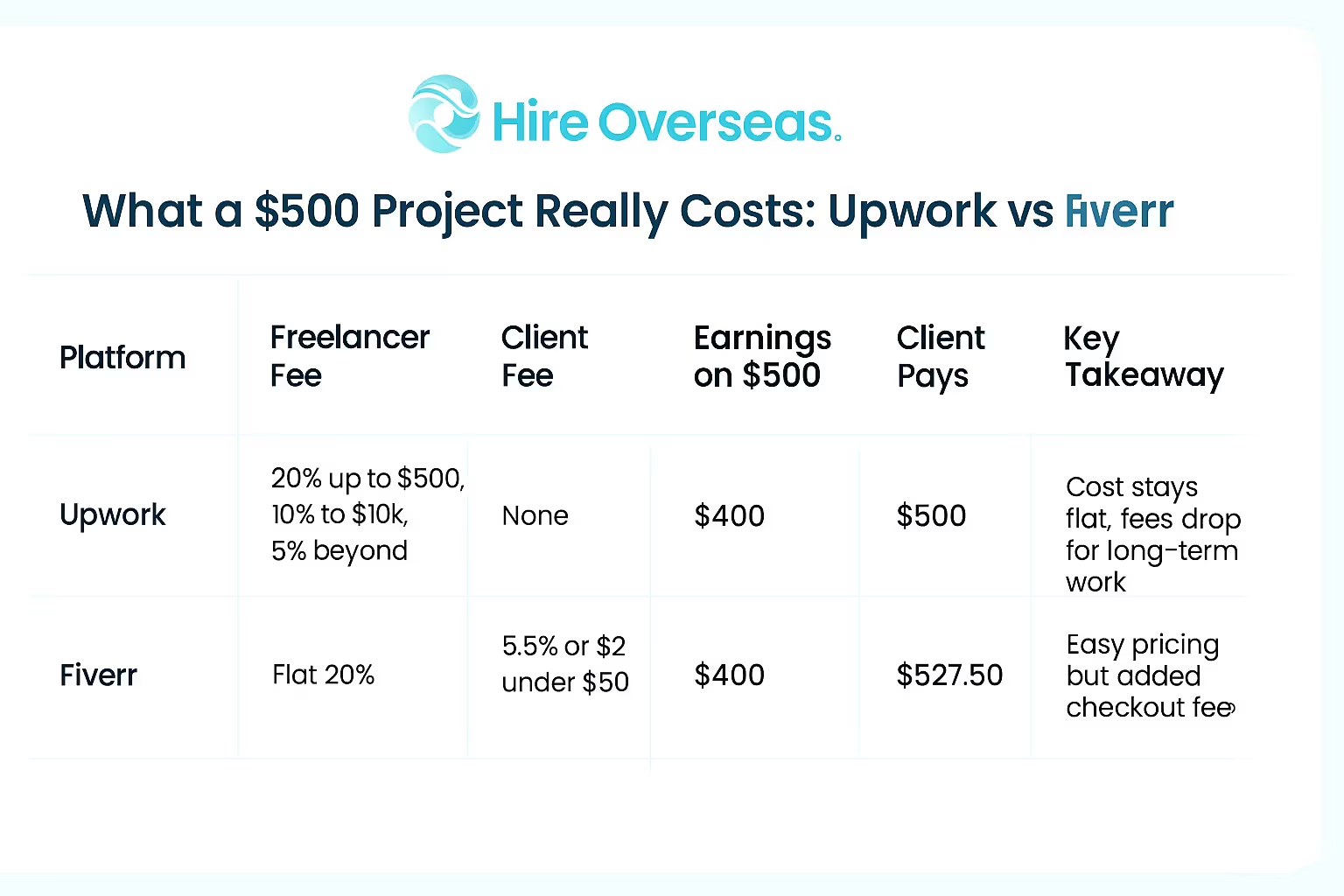
Freelancers earn the same on Fiverr and Upwork; however, Fiverr clients bear higher costs due to added checkout fees. Upwork’s declining commission rate makes it more economical over time for both parties, while Fiverr’s predictable upfront costs appeal to those valuing price certainty, albeit at a higher initial expense.
Talent Pool & Skill Depth
Upwork highlights credentials and experience, including work history, skills tests (now phased out but still viewable), verified certifications, hourly rates, and the Job Success Score (JSS)—a client satisfaction metric based on feedback and repeat business—making it suited for specialized or high-stakes roles like SAP consultants, data engineers, or legal writers.
Fiverr emphasizes performance-based seller levels—New Seller, Level One, Level Two, and Fiverr Pro—advancing through delivery speed, ratings, and completed orders. While lacking extensive upfront credentials, Fiverr streamlines talent discovery via gig packages and reviews, ideal for quick, repeatable tasks like podcast editing, logo design, or video intros.
Project Types & Workflow
Upwork is built for flexibility and depth, supporting both hourly contracts and fixed-price projects with milestones. This structure makes it ideal for long-term or evolving work, where tasks unfold in stages or require ongoing collaboration. For example, a company hiring a data engineer to maintain its ETL pipelines can create a monthly retainer with time tracking and scope adjustments as the project grows. Similarly, startups often use Upwork to build full apps over several months, paying developers at each completed phase—design, backend, testing, and launch.
Fiverr, on the other hand, thrives on clearly defined, repeatable tasks. Freelancers offer standardized service packages with upfront pricing and turnaround times. It’s perfect for one-off needs like creating a company logo, editing a video intro, or translating a blog post. Buyers know exactly what they’re getting and how long it’ll take.
Hiring Process & User Experience
Upwork: Post‑and‑Hire Workflow
- Posting a job – Clients fill out a detailed job post (title, scope, budget), then invite the AI-assisted “Best Match” freelancers or let applications roll in
- Messaging & review system – Freelancers submit proposals; clients can interview via chat or video directly on the platform. Messages and records stay neatly in Upwork Messages, including file-sharing and calls
- Time to hire – Many clients report hiring within 3 days, though some freelancers note it often takes 2–3 weeks, especially for in-depth roles
Fiverr: Buy‑a‑Gig Workflow
- Finding a gig – Buyers search and filter by category, Seller Level, delivery time, and price. No posting required .
- Purchase & messaging – Clients select a gig, customize via “custom offers,” then pay upfront. Communication takes place in a streamlined chat attached to the gig
- Time to hire – Many sellers report securing first orders within 2–4 weeks, though standout gigs may land clients in just days
Time-Zone & Communication Factors
Both Upwork and Fiverr are built for asynchronous collaboration, making it easy to work with overseas freelancers regardless of time zone. Upwork offers more communication tools, including built-in video calls, real-time messaging, and the ability to filter freelancers by location or timezone overlap—ideal for teams that need regular check-ins. Fiverr is more transactional, with messaging tied to each gig, and does not currently support native video calls.
One smart tip for overlap: schedule a fixed 30-minute window during your business hours where you're always available for freelancer syncs. Then, look for talent whose working hours partially align with that window using Upwork’s timezone filter or Fiverr’s location tags.
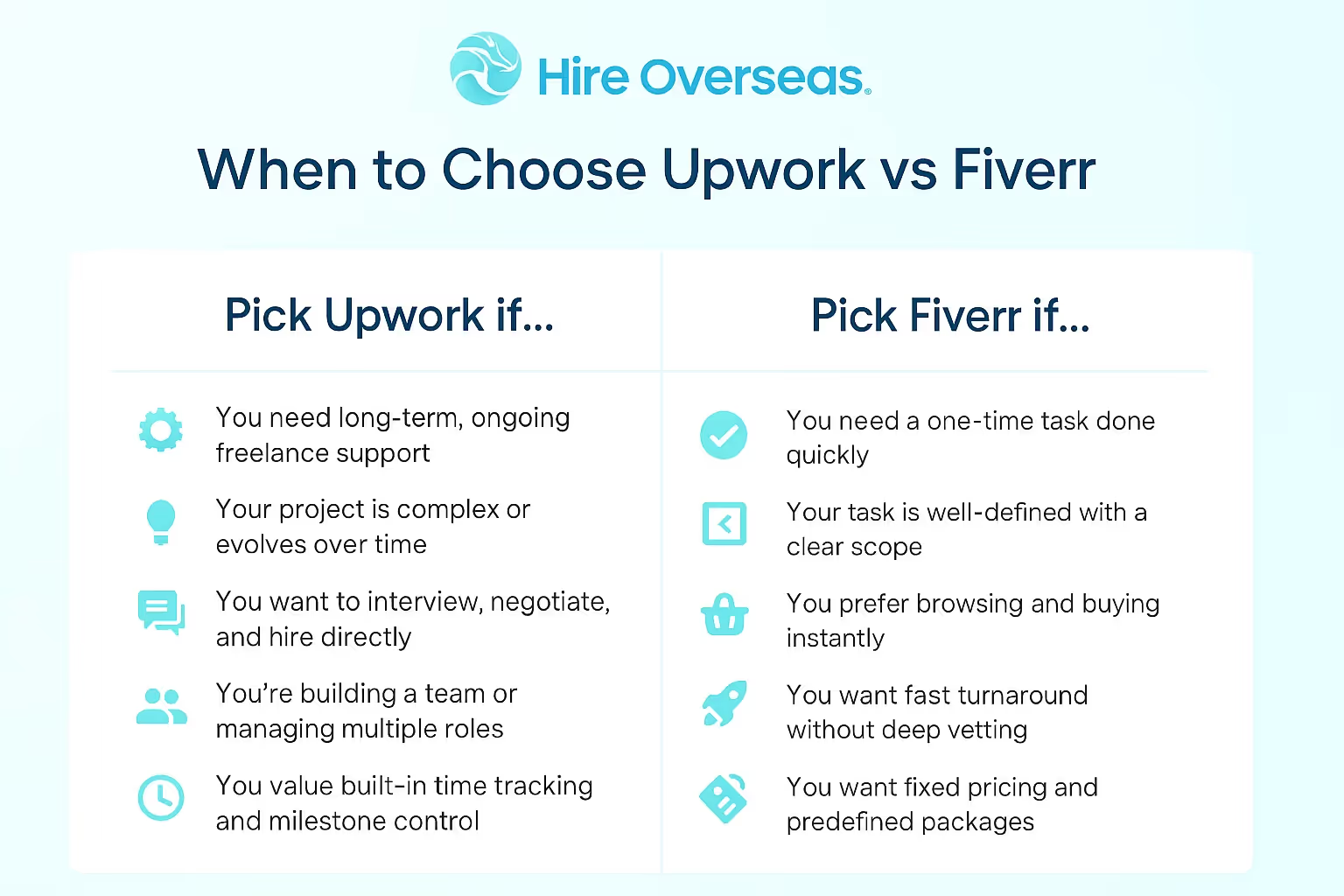
Hybrid or Alternative Strategy
Many businesses find that using just one platform isn’t enough, especially when scaling remote teams. While Upwork and Fiverr are excellent for hiring individual freelancers, they fall short when it comes to managing larger teams, payroll compliance, and cultural onboarding. That’s why smart companies often combine platforms (e.g., Fiverr for quick design work, Upwork for long-term developers) or partner with specialized services like HireOverseas.
HireOverseas goes beyond one-off hiring. We help you build reliable offshore teams, handle cross-border payroll, and ensure new hires are aligned with your company’s values and workflow. From vetting candidates to setting up compliance-ready contracts, we simplify the complex parts of remote hiring.
If you're committed to achieving sustainable, scalable growth with overseas talent, don't rely solely on luck. Explore HireOverseas’ curated talent pools and discover a smarter way to grow your global workforce.
Unlock Global Talent with Ease
Hire Overseas streamlines your hiring process from start to finish, connecting you with top global talent.
